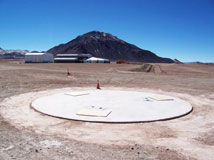
Figure 1. Antenna station A93. The AOS Technical Building is between A93 and Chajnantor, and the Transporter Hangar is at left. (Photo S. Cabezon)

Figure 1. Antenna station A93. The AOS Technical Building is between A93 and Chajnantor, and the Transporter Hangar is at left. (Photo S. Cabezon)
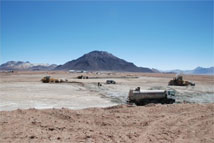
Figure 2. Grading proceeds at the center of the array. Antenna station A93, the Technical Building, and the Hangar are in the distant background against Chajnantor.
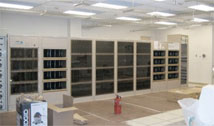
Figure 3. The first quadrant of the bilateral correlator that will eventually link 64 antennas has been installed in the AOS Technical Building.
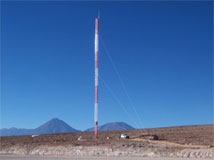
Figure 4. A new holography system, built at the NRAO Technology Center, will be assembled at the OSF Technical Building. The transmitter will be mounted atop the recently finished holography tower. The Licancabur volcano (left) and Juriques (right) are in the background.
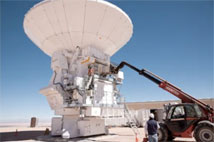
Figure 5. Instrumentation racks for the ALMA Back End were loaded into a Mitsubishi 12m antenna recently. The first receiver complement (Front End) will join them shortly.
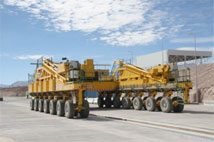
Figure 6. The ALMA transporter prowls the antenna integration area in the OSF Technical Building compound. The Transporter Shelter is in the right background. (Photo A. Beelen).
Construction of the network of antenna pads, as well as the roads, electrical cables and network cables tying them all to the Technical Building, has proceeded at the 16,400 foot elevation Array Operations Site (AOS). As each antenna pad receives its structural concrete, a curing process must follow, with the structure protected by a tent. To date, seventeen pads at the high site have received their concrete. The closest of these to the main building is A93, to which the first accepted antennas may move for high altitude testing and the later stages in the process of Assembly, Integration and Verification. This antenna station lies in the foreground in Figure 1, with the Technical Building and the Transporter Hangar visible in the background, to the North.
About a third of the work to build the 200+ antenna foundations that comprise ALMA will be concentrated in the region of the central cluster. Grading of this area is underway, as the short baselines needed for Commissioning and Science Verification are available in this portion of the array.
With the pads now under construction, the network of roads, electrical connections and fiber that tie them to the Technical Building are also being built. The 16-station NAOJ correlator, installed there last December, has now been joined by the first quadrant of the bilateral correlator (Figure 3), which can serve 32 antenna stations. All first quadrant correlator racks have been installed, and they have been partially populated with boards. The process of inter-rack cabling has begun. A quick test of a station bin and a correlator bin showed a good cross-correlation spectrum.
Holography of production antennas has been occurring from the vendor areas at the Operation Support Facility (OSF) using a holography transmitter mounted on a tower near the temporary offices.
With the arrival of the seventh Vertex antenna at the end of August, the total number of production antennas at the OSF reached eleven. Outfitting of the second NAOJ antenna has begun, with the emplacement of the instrumentation racks for the Back End. These racks are assembled at the Pete Domenici Science Operations Center in Socorro. Testing of the second set at the OSF has also occurred.
The first ALMA Front End, containing the receiver cartridges, should be mounted on this antenna soon. Over the next several weeks, the ALMA Project expects to take possession of the first production antennas as acceptance testing finishes. At that point, the antennas will be moved by the ALMA transporter to a large courtyard within the Technical Facility area and holography will continue using a transmitter mounted on a nearby, recently-built tower. Further integration of ALMA equipment into the antenna will occur at the OSF.
As activity accelerates in Chile, the period of integration and testing at the ALMA Test Facility winds down. That facility will continue to operate at a reduced level through the end of the year. Interferometry there is now routine and a modest flux monitoring activity continues, though most of the effort focuses on getting the total power testing routines needed to test the production antennas in Chile operating efficiently.